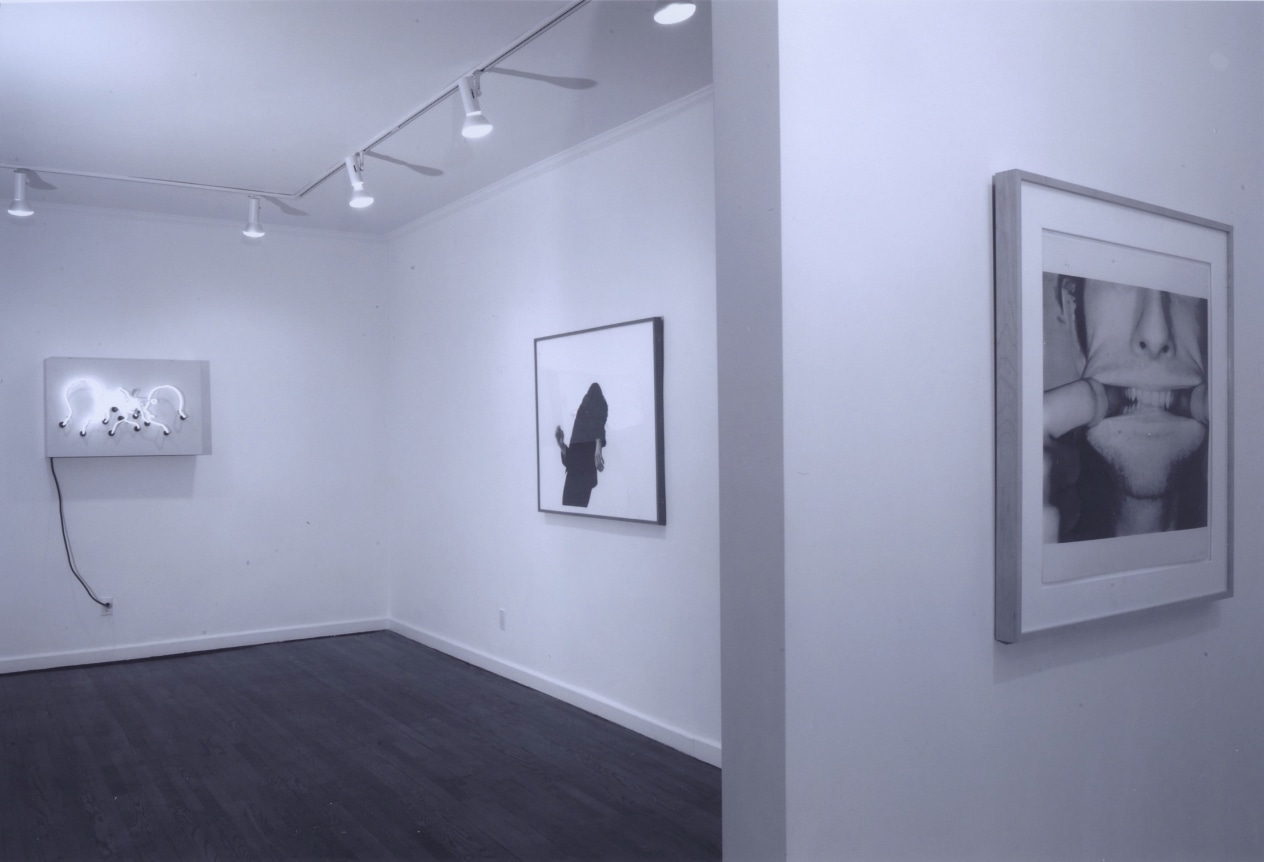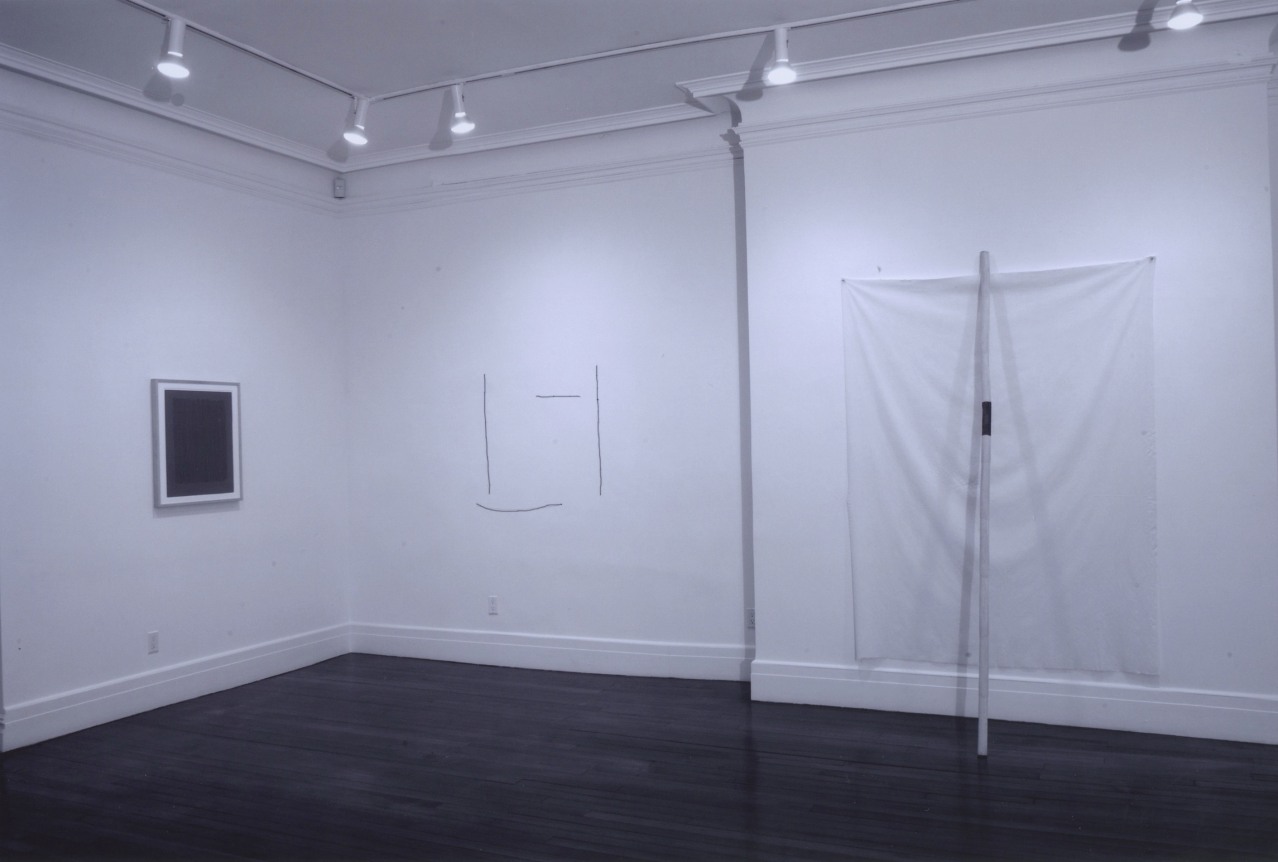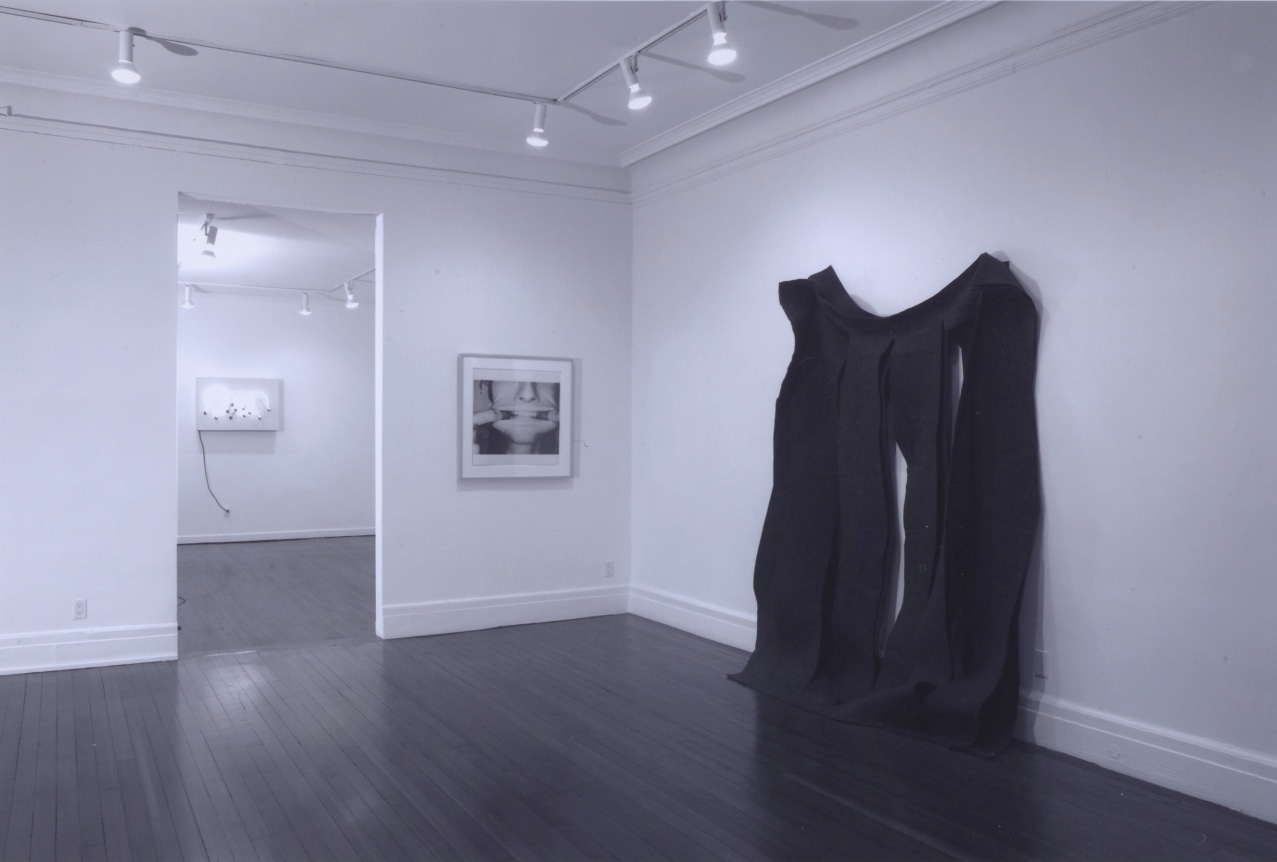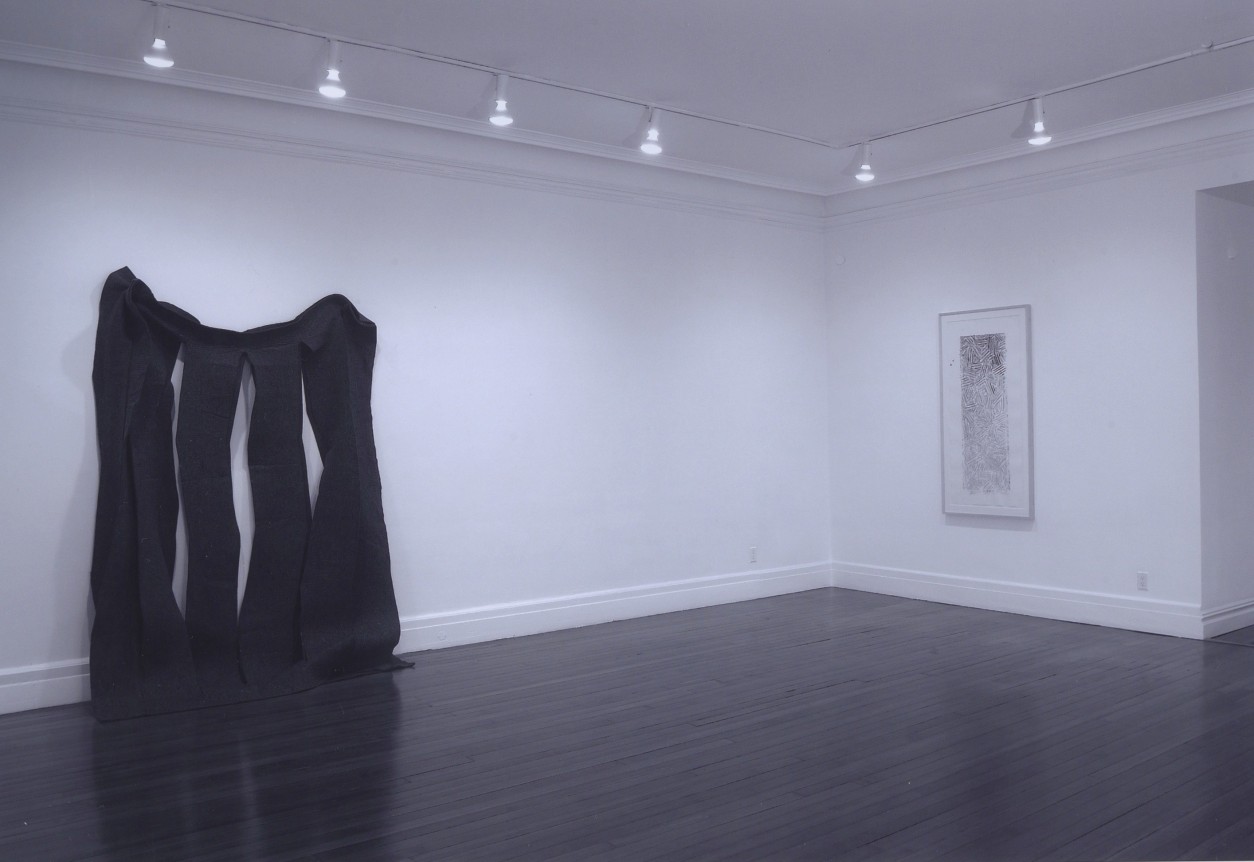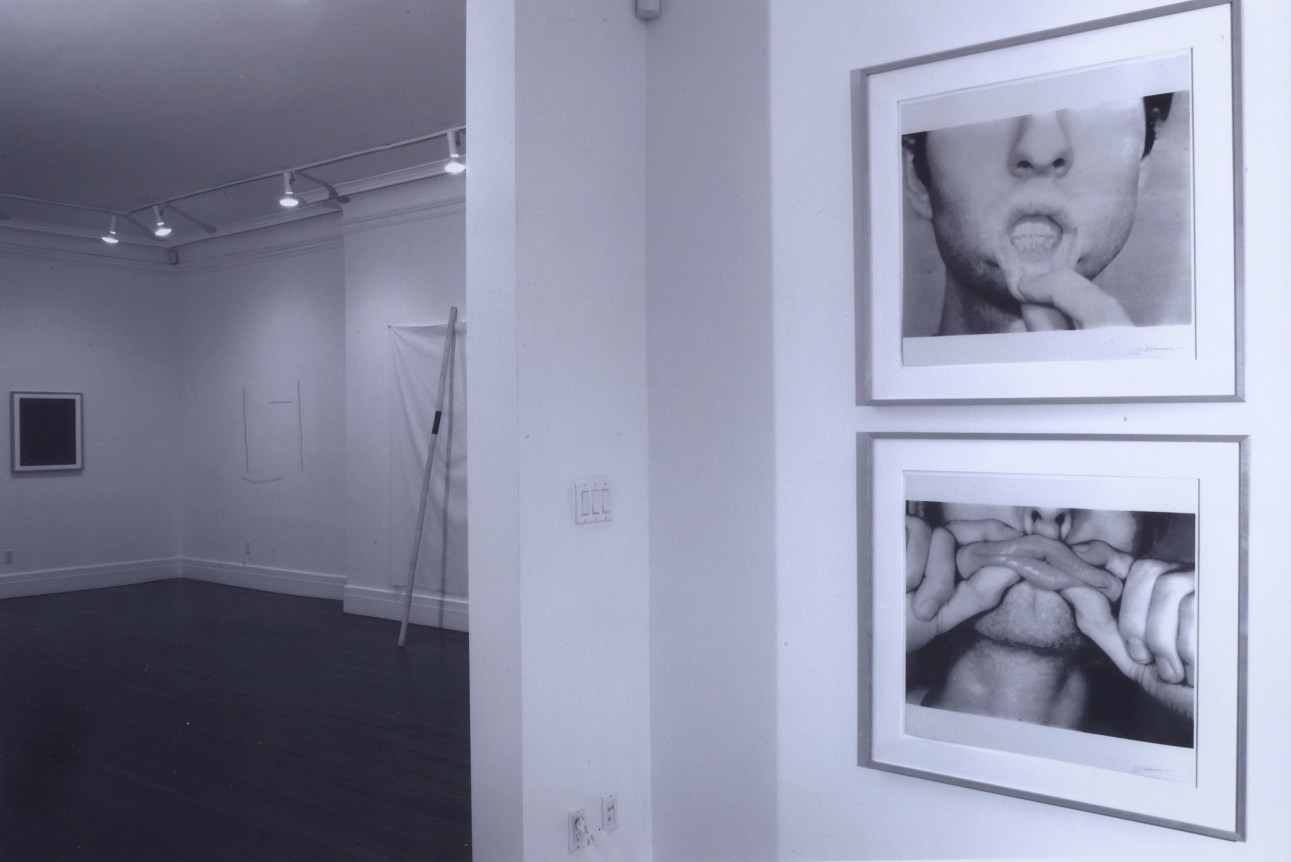The term ‘gesture’ typically brings to mind the expansive constructs of Abstract Expressionism. However, with the rise of more conceptual explorations in contemporary art, the notion of gesture becomes more filtered. The artists shown in The Mediated Gesture adopt a stance of distanced causation. As opposed to the Abstract Expressionist’s mark of existence, they use gesture as an interposing reference. The term gesture in relation to these artists suggests control, and the absence of romanticism.
In his cross-hatch series, Jasper Johns uses the encaustic medium to arrest the gestures. Each stroke, and successive stroke, points to the meaning of gesture instead of a gesture’s meaning. The extended arm in Periscope I explores the question of what comes first: the gesture, or its reason for being? Just as Johns mixes and matches the name of a color with its application, the visual elements in his work often serve as surrogates for the artist’s world, and not its reflection.
Robert Rauschenberg uses found material for the selection of a gesture rather than the making of one. Works from his Jammer series, are a retreat from urban imagery, and although one is aware of the artist’s hand in the reconstruction, it is as subtle and delicate as the materials used in these works.
Robert Morris and Richard Tuttle do not apply concrete gestures. With his sliced-felt works, Morris arrives at gesture by relying on entropy to determine the form in which the material takes. Richard Tuttle’s wire works allow the gesture to appear, as wire is wrapped around nails on a wall and interacts with the light and surface that surrounds it.
Bruce Nauman pushes and pulls his body in Studies For Holograms, but this aggressive manipulation is devoid of personal message. Most often, Nauman’s work causes a strong reaction in the viewer, which could be seen as the “true” gesture the artist intended. Robert Longo’s contorted figures are displayed in a vacuous context, which distances the subjects from their urban origin- with its fashions, scenes and sounds. By presenting exaggerated archetypal forms of motion, Longo frames out the emotional context of the figures, leaving the gesture detached from its inspiration.
For further information please contact Jessica Mastro at 212.249.4470 or info@castelligallery.com

